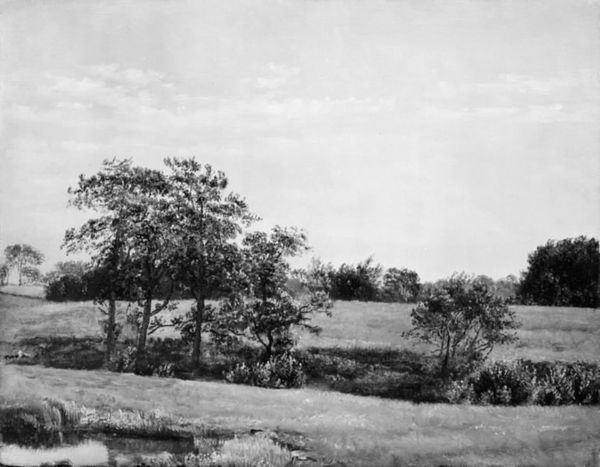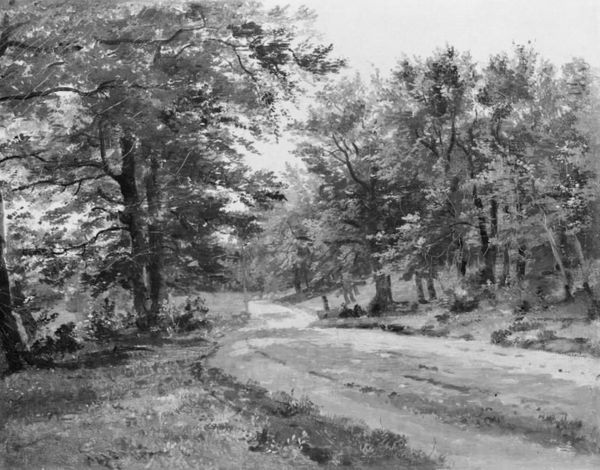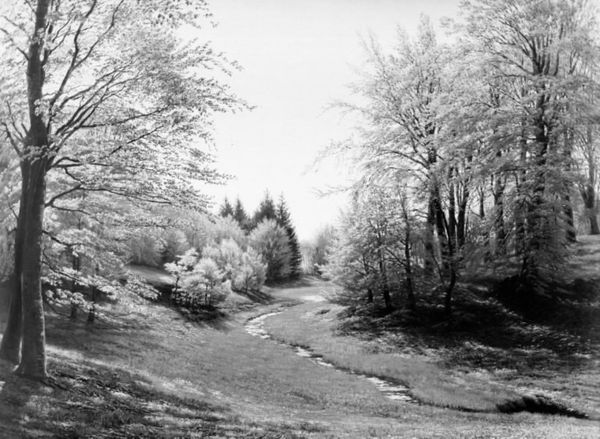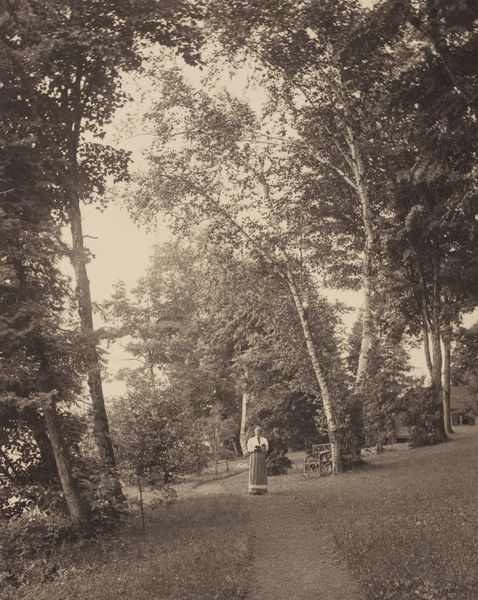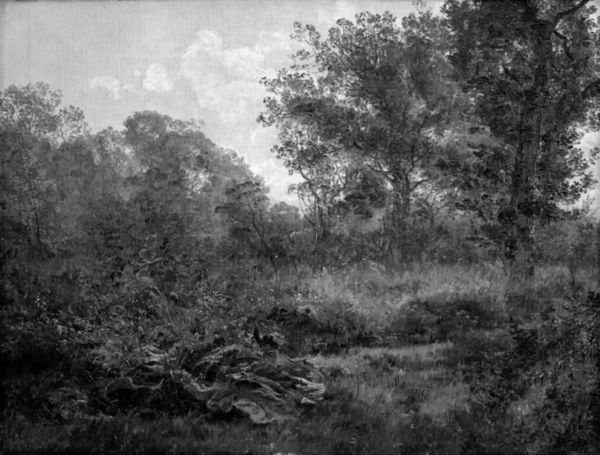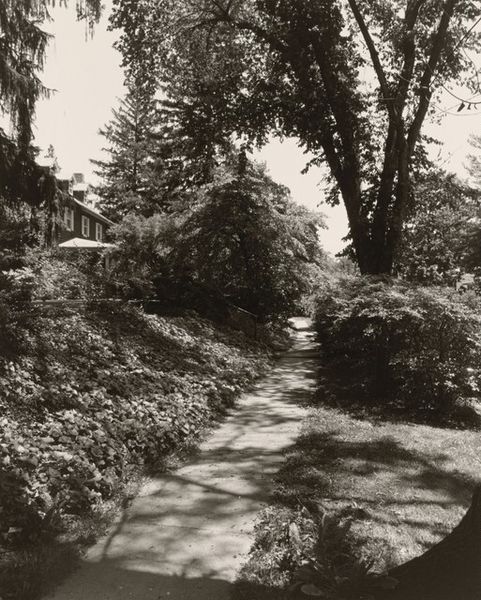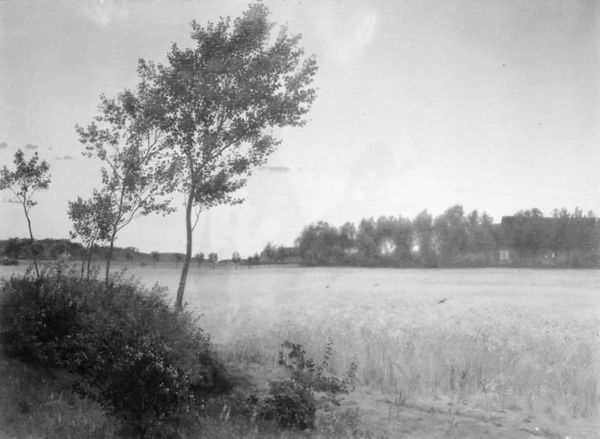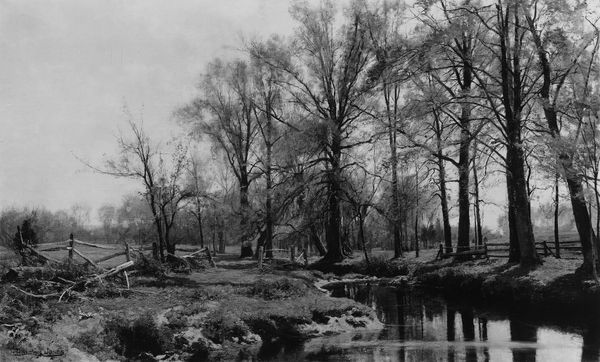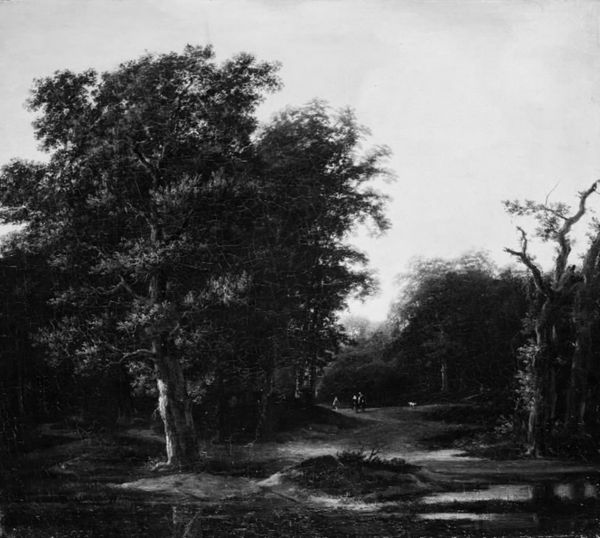
painting, plein-air
#
painting
#
impressionism
#
plein-air
#
landscape
#
nature
#
monochrome photography
#
monochrome
#
realism
#
monochrome
Dimensions: 41.5 cm (height) x 52 cm (width) (Netto)
Curator: Philipsen's "Park with Tall Trees," created in 1888, offers us a glimpse into a quiet moment in nature, now housed at the SMK in Copenhagen. Editor: It has such a subdued quality, almost dreamlike. The monochrome palette adds to that effect, softening the edges. There is such intimacy in what should feel immense given the depth of field. Curator: Absolutely, the use of light and shadow transforms what could be a straightforward landscape into something more emotionally resonant. You see a real reverence for nature coming through, it mirrors an inherent continuity of landscape paintings where nature is not seen in the terms of wilderness, but in human relation, as landscape architecture. Editor: I think what also stands out to me is what isn't there. No people, no animals that we can discern; the park exists for its own sake. Who is this 'park' really serving in reality? How does the lack of a specific racial marker, beyond what a person like Philipsen reflects back on canvas through selection in location and portrayal, point to historical notions of public space as inherently white? Curator: It becomes almost an archetype of a serene natural space. Parks themselves, throughout time, have served a kind of visual shorthand for retreat. A connection to our inherent need for natural surroundings is so thoroughly baked into our symbolic imagination, to a sense of inner balance that nature, a green common, seems almost inextricably tied to freedom itself. Editor: You can trace how visual signifiers surrounding "nature" operate socially. A picture like this makes one aware of its privilege. Is the peace portrayed available to everyone, or only to specific bodies inhabiting such places? How many know Philipsen today and are there just as impressive landscape painters, Black, Asian, Latin, etc., that have been completely shut out by this Eurocentric canon? Curator: This points at an opening for continued investigation into the narratives behind representation. Visual art offers us such openings into new possibilities. Editor: Exactly, both its inherent power and subtle complicities remain visible to those looking intently. The canvas speaks more the more we realize the loaded conversations around it.
Comments
No comments
Be the first to comment and join the conversation on the ultimate creative platform.

